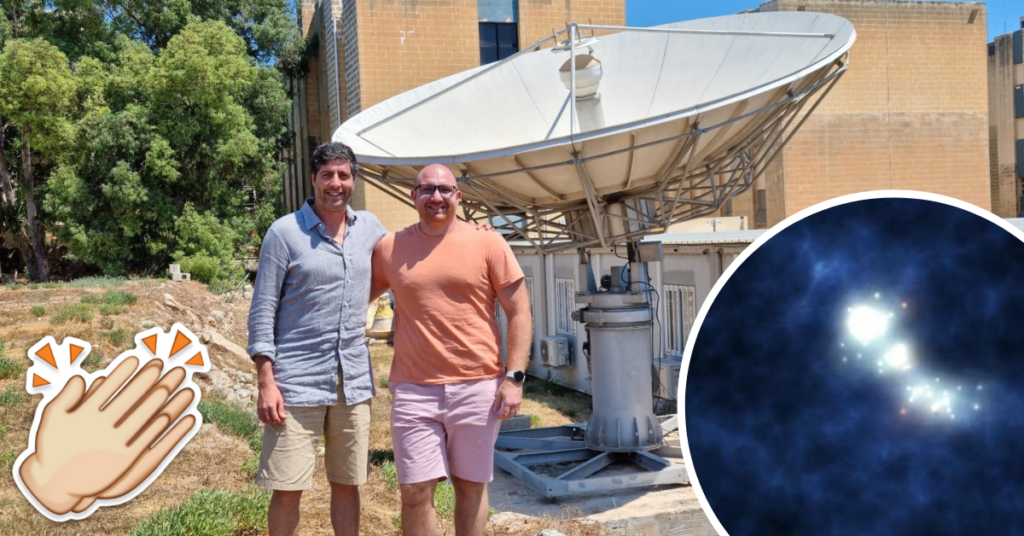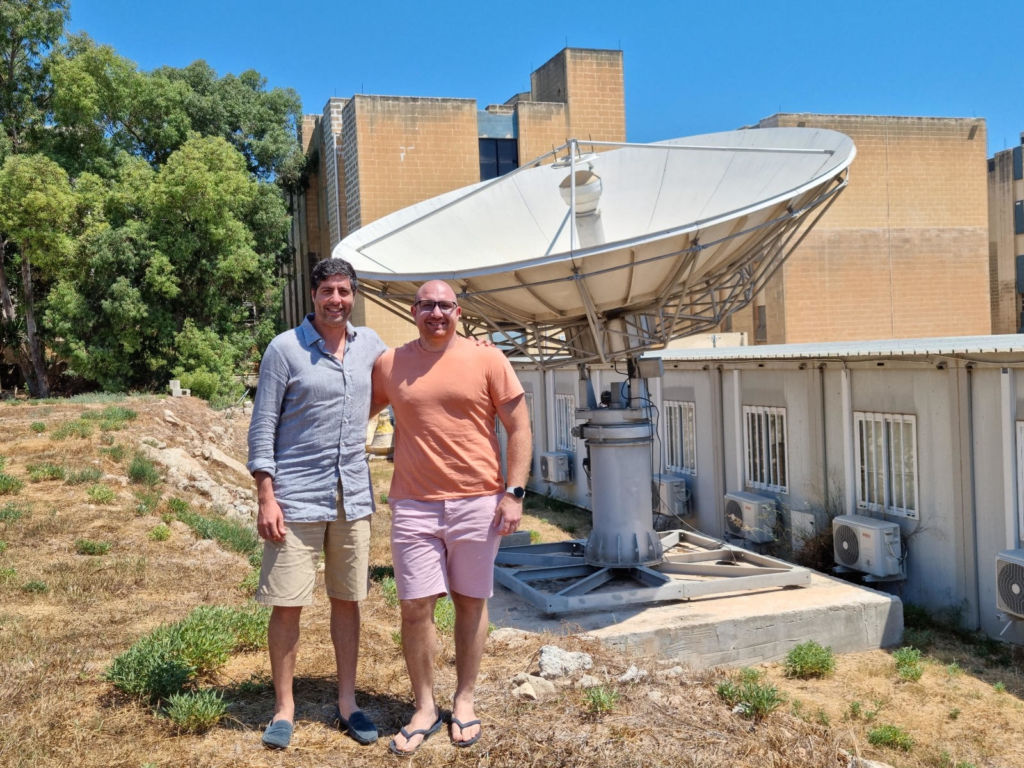Maltese Astrophysicists’ Team Devise New System To Study The First Stars And Galaxies

A team of astronomers including two Maltese astrophysicists devised a system that allows scientists to study light from the very first stars and galaxies.
Alessio Magro and Kristian Zarb Adami were two of 30 researchers across the globe to have made some serious headway in the study of these stars.
Studying the first stars has been a long-term goal for scientists because it would help explain how the universe evolved from emptiness after the Big Bang. A process leading it to become the cosmos we see today – 13.8 billion years later.
This job could be done in two ways. Either with the James Webb Telescope or the Square Kilometre Array (SKA) – due to be completed later this year. While the Webb looks at wavelengths in infrared, the SKA uses radio waves.
Current radio telescopes, however, have to face some challenges in detecting the first stars because they are made to face thick hydrogen clouds that marr the view since they absorb light.
Views can also be distorted by radio signals. And together with the hydrogen-cloud problem, the process of study can be a pesky one.
The problems, however, are now water under the bridge, as scientists at the University of Cambridge, together with Magro and Zarb Adami have solved the issue.
Their solution allows scientists to see through the first stars, through dense primordial clouds, and even sky noise signals.
The solution itself was part of the REACH experiment (Radio Experiment for the Analysis of Cosmic Hydrogen). An experiment that gave astronomers the ability to observe the stars in the same way we would infer a landscape by looking at shadows in the fog.

“Today we can use supercomputers and leverage technology from modern communication systems to simulate a real observation using multiple antennas, which improves the reliability of our data,” Zarb Adami said.
“Since the power of the signal we want to detect is so weak, novel digital processing techniques had to be developed to maximise the dynamic range, generated through by the antennas’ system,” Magro said.
Magro and Zarb Adami, of the Institute of Space Sciences and Astronomy, are together leading the digital processing aspects of the project. They are adapting technology designed by their team developed for the SKA to suit the more stringent requirements of this telescope.
What do you make of this?
